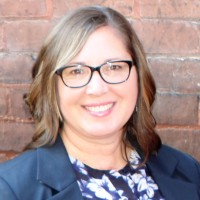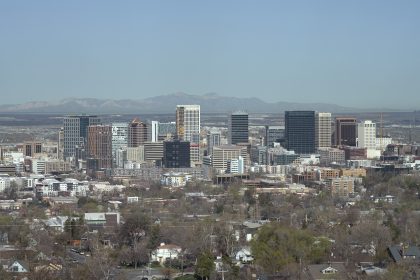Community Foundations in Time for Celebration and Reflection
COMMENTARY

This week, our nation comes together to recognize the more than 750 community foundations that operate in communities spanning the U.S. In many communities, organizations like mine have played a central role in fostering local collaboration and innovation to address persistent civic and economic challenges for decades. Of course, the last two years have challenged community foundations, as they have also challenged our entire country.
Community foundations have a long history in the U.S. stretching back to the early 1900s. They work as grantmaking public charities, bringing together the financial resources of individuals, families, and businesses to improve the lives of people in their local community and region. The network of community foundations addresses issues at a local level in a way that other philanthropic organizations do not.
As executive director of the Community Foundation for the Ohio Valley, I see this year as an opportunity to celebrate the good that community foundations do and ask the hard questions we need to answer to stay relevant to the people we serve. The key is that community foundations must do both to remain impactful.
Community foundations do amazing things and they should be celebrated. In the last two years alone, they stepped up in extraordinary ways in communities large and small across the country. Hundreds of community foundations across the nation created relief funds to help those affected by COVID-19 and worked to reduce grant timelines to provide quick support. In 2020 alone, those efforts mobilized almost $1.3 billion in addition to the billions that community foundations already distribute every year.
My own organization was no stranger to meeting unprecedented and rapidly changing community needs. CFOV was able to keep local nonprofits functional and boost the morale of the community by providing PPE for volunteers and workers at children’s centers and homeless centers, keeping them operating in the safest conditions possible. CFOV also quickly raised and deployed an additional $300,000 in funds to help with COVID-related food insecurity and mental health issues. We were also able to support after school programs and gaps in broadband through our emergency fund—issues that became magnified in Appalachia during the pandemic.
At CFOV, we are also deeply committed to addressing long-term challenges that our community confronts. Even before the pandemic, we partnered with local organizations, like the United Way, the Family Resource Network, and West Virginia University Extension, to conduct an extensive assessment of community needs, ranging from education, health care, to access to living-wage jobs. Emerging from the depth of the pandemic, we have been able to help local governments identify priority funding areas based on our assessment and advised the distribution of multimillion-dollar government grants to those of high needs. Community foundations are well positioned to play a pivotal role in improving local governance with community-based insights.
These are undeniably good things, but the ability of community foundations to do these good things is only as strong as our ability to understand our communities and reach those in need. That means making sure we are asking ourselves the hard questions about equity, power, and race and examining our ability to create more inclusive and equitable communities. These types of conversations lead to understanding our own blind spots, and enhance our ability to truly help the most marginalized in our communities. If we cannot reach and help the most marginalized, then we will fail at making transformative change.
That might sound like a lot, and it is, but it is also something to celebrate. Although these conversations can be difficult, community foundation leaders are better positioned to have them now than we ever have been in our history. And we should keep our eye on the goal and be intentional with our approach—constantly striving to do better for the communities we know and love.
Susie Nelson is the executive director of the Community Foundation for the Ohio Valley, located in Wheeling, West Virginia, serving eight counties in northern West Virginia and eastern Ohio. In addition to her work at Community Foundation for the Ohio Valley, Susie also spends time working with nonprofit leaders to assist them with finding and acquiring philanthropic resources from across the region and nation.























